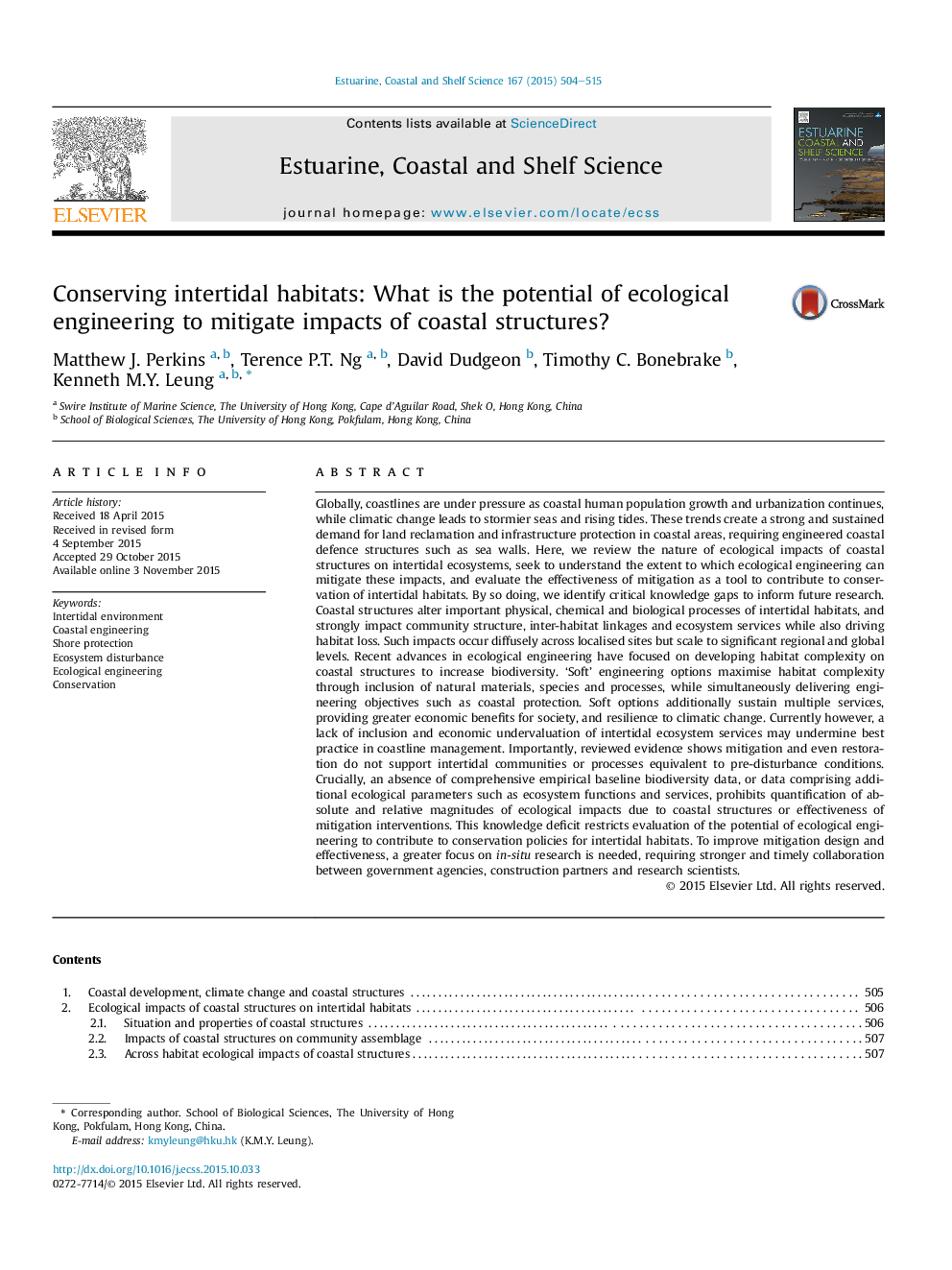| کد مقاله | کد نشریه | سال انتشار | مقاله انگلیسی | نسخه تمام متن |
|---|---|---|---|---|
| 4539350 | 1326591 | 2015 | 12 صفحه PDF | دانلود رایگان |
Globally, coastlines are under pressure as coastal human population growth and urbanization continues, while climatic change leads to stormier seas and rising tides. These trends create a strong and sustained demand for land reclamation and infrastructure protection in coastal areas, requiring engineered coastal defence structures such as sea walls. Here, we review the nature of ecological impacts of coastal structures on intertidal ecosystems, seek to understand the extent to which ecological engineering can mitigate these impacts, and evaluate the effectiveness of mitigation as a tool to contribute to conservation of intertidal habitats. By so doing, we identify critical knowledge gaps to inform future research. Coastal structures alter important physical, chemical and biological processes of intertidal habitats, and strongly impact community structure, inter-habitat linkages and ecosystem services while also driving habitat loss. Such impacts occur diffusely across localised sites but scale to significant regional and global levels. Recent advances in ecological engineering have focused on developing habitat complexity on coastal structures to increase biodiversity. ‘Soft’ engineering options maximise habitat complexity through inclusion of natural materials, species and processes, while simultaneously delivering engineering objectives such as coastal protection. Soft options additionally sustain multiple services, providing greater economic benefits for society, and resilience to climatic change. Currently however, a lack of inclusion and economic undervaluation of intertidal ecosystem services may undermine best practice in coastline management. Importantly, reviewed evidence shows mitigation and even restoration do not support intertidal communities or processes equivalent to pre-disturbance conditions. Crucially, an absence of comprehensive empirical baseline biodiversity data, or data comprising additional ecological parameters such as ecosystem functions and services, prohibits quantification of absolute and relative magnitudes of ecological impacts due to coastal structures or effectiveness of mitigation interventions. This knowledge deficit restricts evaluation of the potential of ecological engineering to contribute to conservation policies for intertidal habitats. To improve mitigation design and effectiveness, a greater focus on in-situ research is needed, requiring stronger and timely collaboration between government agencies, construction partners and research scientists.
Journal: Estuarine, Coastal and Shelf Science - Volume 167, Part B, 20 December 2015, Pages 504–515
